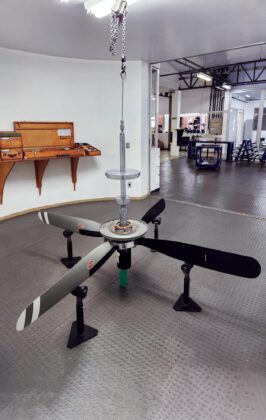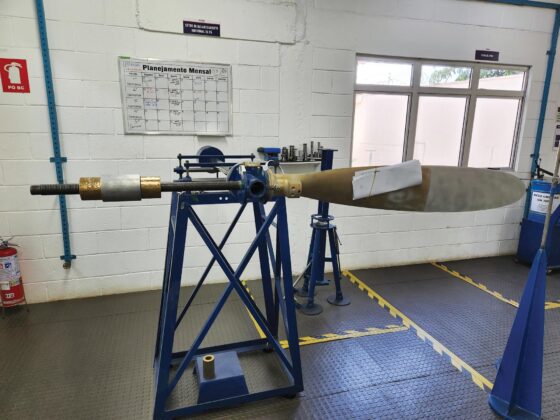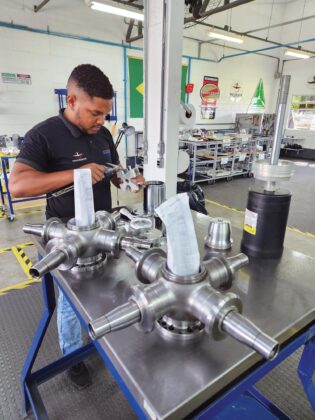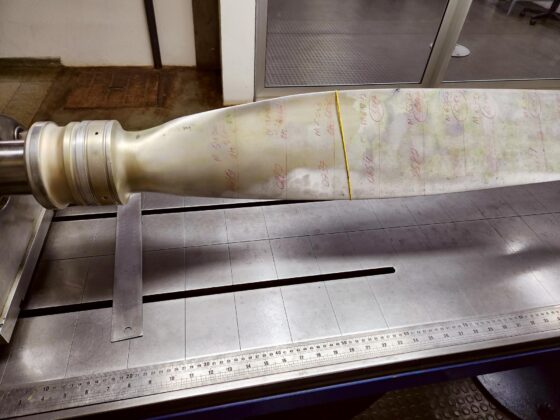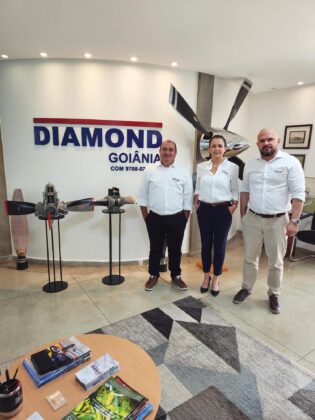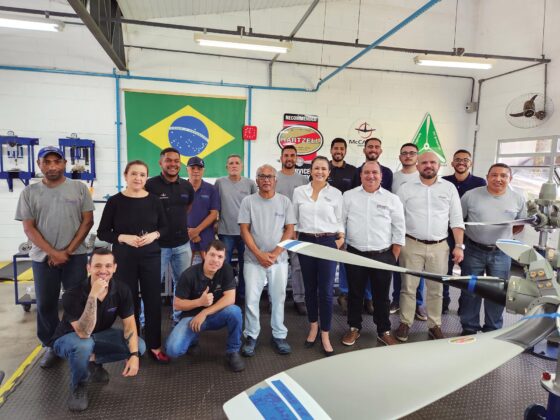“Propeller: Fan that cools the pilot. Turn it off and see how he sweats”, is the caption on an oft-repeated cartoon, usually depicting a single-engine airplane with a stopped prop in a descending flight with its pilot covered in sweat beads. Of course, the reason for the stopped prop in the cartoon is an engine failure. But many pilots do not realize that a prop failure often has far worse consequences than an engine failure. The propeller is the aircraft’s component that suffers the highest efforts. While a prop rotates at around 2000 RPM or above, the enormous centrifugal forces imposed on its blades and other parts are constantly forcing the molecules of the metals to spread apart, reducing material resistance and allowing for microscopic cracks to form. This prop wear and tear gives no external signs. Undetected in time, these weakened materials and cracks may evolve into a broken blade, possibly with such a violent unbalance that not even prompt pilot action reducing power and cutting the engine might avoid catastrophic failures of other airframe components due to the vibration.
Fortunately, proper maintenance according to the prop manufacturer’s maintenance manuals will ensure the continued safe operation of the prop. To know about these maintenance procedures, AgAir Update went to a most knowledgeable source: the team of expert technicians at Diamond Aviação in Goiânia, state of Goiás.
Diamond Aviação Is the only Hartzell Service and Support Center in Brazil, besides being an exclusive representative for McCauley props and a maintenance center for MT-Propeller. Diamond was created 25 years ago by Licurgo de Souza, a man with a long history in aviation, who was a pilot, an aircraft maintenance technician and a visionary entrepreneur. He owned and operated airplanes and a maintenance shop until realizing there were no specialized propeller maintenance centers in Brazil back then, but only regular maintenance shops which often had a propeller section. He started Diamond Aviação as a Hartzell representative, aiming to create an official propeller service center for the Brazilian market. Later, Diamond added McCauley and MT-Propeller to their portfolio. Unfortunately, Licurgo passed away four years after creating Diamond, but not before passing on his vision and values of commitment and responsibility to his three daughters – Valéria, Renata and Geisa de Souza – and his son Licurgo de Souza Filho, who kept their father’s dream alive. Today, Diamond Aviação is one of only 25 Hartzell Service Centers worldwide and the only one in Brazil.
When you consider that 60% of all propeller airplanes in the world fly with Hartzell products, you can appreciate how hard it is to obtain this certification. Sales VP Renata de Souza points out the main differences between a typical maintenance shop and a Service and Support Center: the latter must have technicians trained at the factory and maintain necessary approved tools and equipment for the services, all of which must be performed in-house. Also, Hartzell Service and Support Centers must pass a factory on-site audit every two years to maintain their status.
Diamond services Brazilian Air Force AT-29 Super Tucano five-blade props through an outsourcing contract with Embraer. Diamond can service all Hartzell, McCauley and MT-Propeller props, including those with composite blades. Composite props so far have had no application in ag aviation due to their blades being less resistant to minor impacts, like those that happen in unpaved runway operations, and therefore won’t be covered here.
Hartzell says that Air Tractor propellers must undergo an overhaul every 3,000 hours or 36 months, whichever comes first. For the Ipanema, these intervals are 2,000 hours or 36 months. General and executive aviation propellers have longer calendar intervals. Still, in the case of ag aviation, the calendar interval is reduced due to their exposure to chemicals, which can speed up corrosion.
The overhaul starts with the prop being removed from the aircraft. If the customer requires, Diamond can send a technician to remove the prop from the aircraft, but in 90% of the cases, this is provided by the customer, as usually prop inspection is done concurrently with other maintenance. Diamond has a fleet of four pickup trucks specially outfitted with trained drivers to carry propellers from where the airplane is located to one of their two facilities, Goiânia or São Paulo – the latter usually for customers in Brazil’s south and southeast states.
Upon arrival at Diamond’s shop, the prop is completely disassembled and cleaned with a biological compound – Bio-Circle – which has bacteria that eat grease and oil, avoiding using solvents that are so harmful to the environment when discarded.
Next, all the paint on the parts is stripped by plastic media blasting instead of previously used chemical removers. Chemical paint removers are so aggressive that they may affect the metal of the parts and harm the environment when discarded.
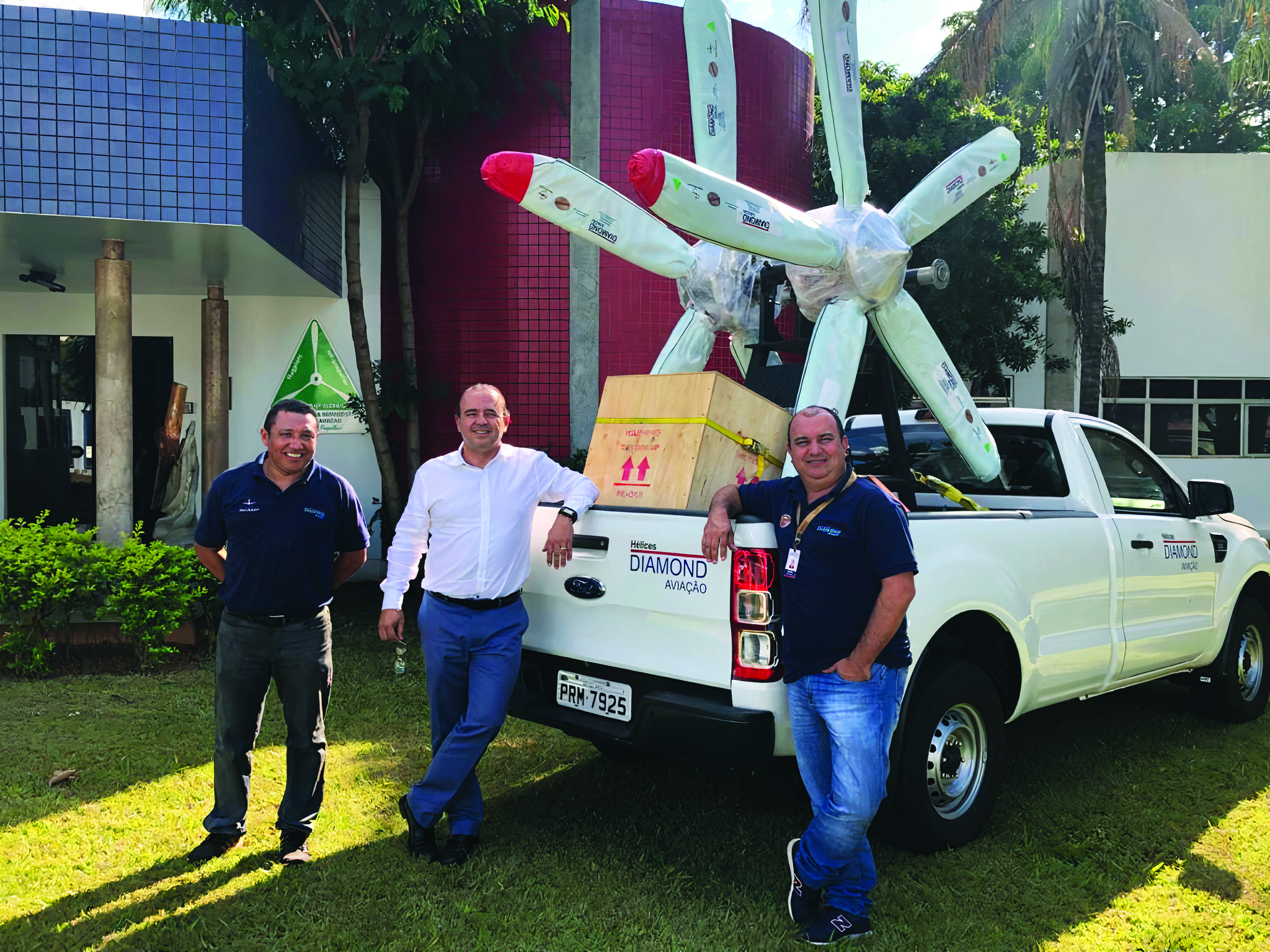 Once the paint is removed, all parts are inspected visually and measured, especially the blades. Any part with substandard dimensions is rejected, so this is done before any further steps. Parts that pass the dimensional inspection then go to the non-destructive testing section where they undergo penetrating dye tests, magnaflux or eddy current inspections, whichever mandated by the manufacturer, looking for any discontinuity – microscopic superficial or sub-superficial cracks that the naked eye cannot see. Diamond sales manager Marco Antônio Silva pointed out that Hartzell requires Service Centers to do non-destructive tests in-house, while most maintenance shops outsource them.
Once the paint is removed, all parts are inspected visually and measured, especially the blades. Any part with substandard dimensions is rejected, so this is done before any further steps. Parts that pass the dimensional inspection then go to the non-destructive testing section where they undergo penetrating dye tests, magnaflux or eddy current inspections, whichever mandated by the manufacturer, looking for any discontinuity – microscopic superficial or sub-superficial cracks that the naked eye cannot see. Diamond sales manager Marco Antônio Silva pointed out that Hartzell requires Service Centers to do non-destructive tests in-house, while most maintenance shops outsource them.
Passing the non-destructive inspection, each blade is refurbished to remove corrosion, nicks and dings and is individually balanced so that all blades in a propeller have the same weight.
Next, the shank of each blade is cold-rolled, a process that uses a steel wheel to apply a pressure of 1,950-2,000 psi to the aluminum shanks to eliminate any cracks and stress on this critical area.
After this, the parts receive a chemical surface protection – either alodine or cadmium – for corrosion protection. Marco Antônio notes that this step is most important for ag aviation props due to their exposure to chemicals, remarking that the surface protection section of the shop is one of the most carefully examined by Hartzell auditors during their biennial audits.
Once the surface protection is done, all parts are painted in a special room where an air filtering system maintains a contaminant-free environment, and the prop is reassembled before the final step: a static balance of the assembled prop. Renata de Souza claims that 90% of the props that undergo this static balance do not need dynamic balancing once reinstalled in the aircraft.
The propeller then is sent back to the customer, ready to return to safe operation until the next TBO – unless some incident, like a prop strike happens, in which case it should be promptly taken again to a knowledgeable shop or Service Center for inspection and repair.
AgAir Update says a special thank you to Ms. Valéria and Renata de Souza and the whole Diamond Aviação technical team, whose assistance made this article possible.



